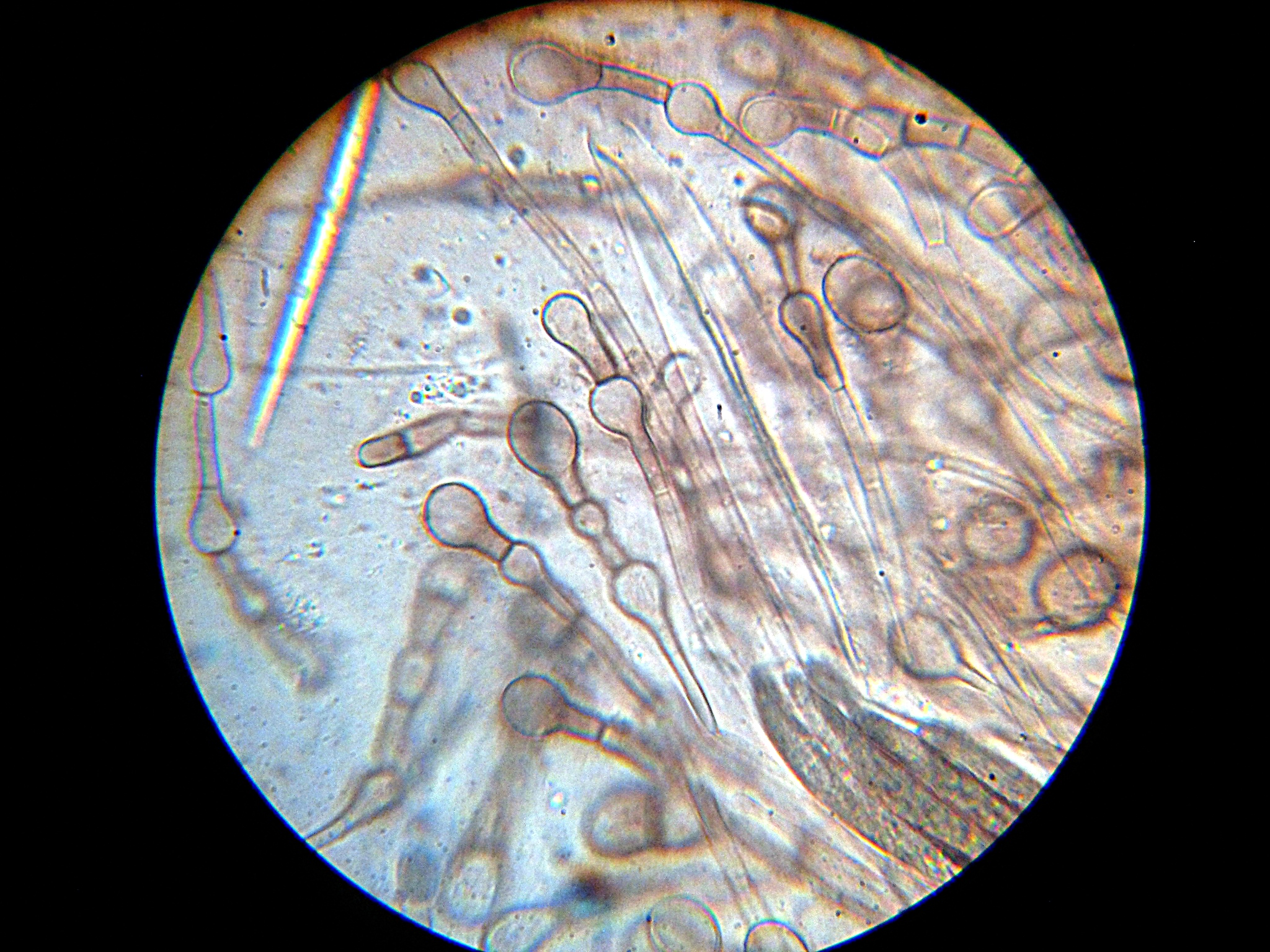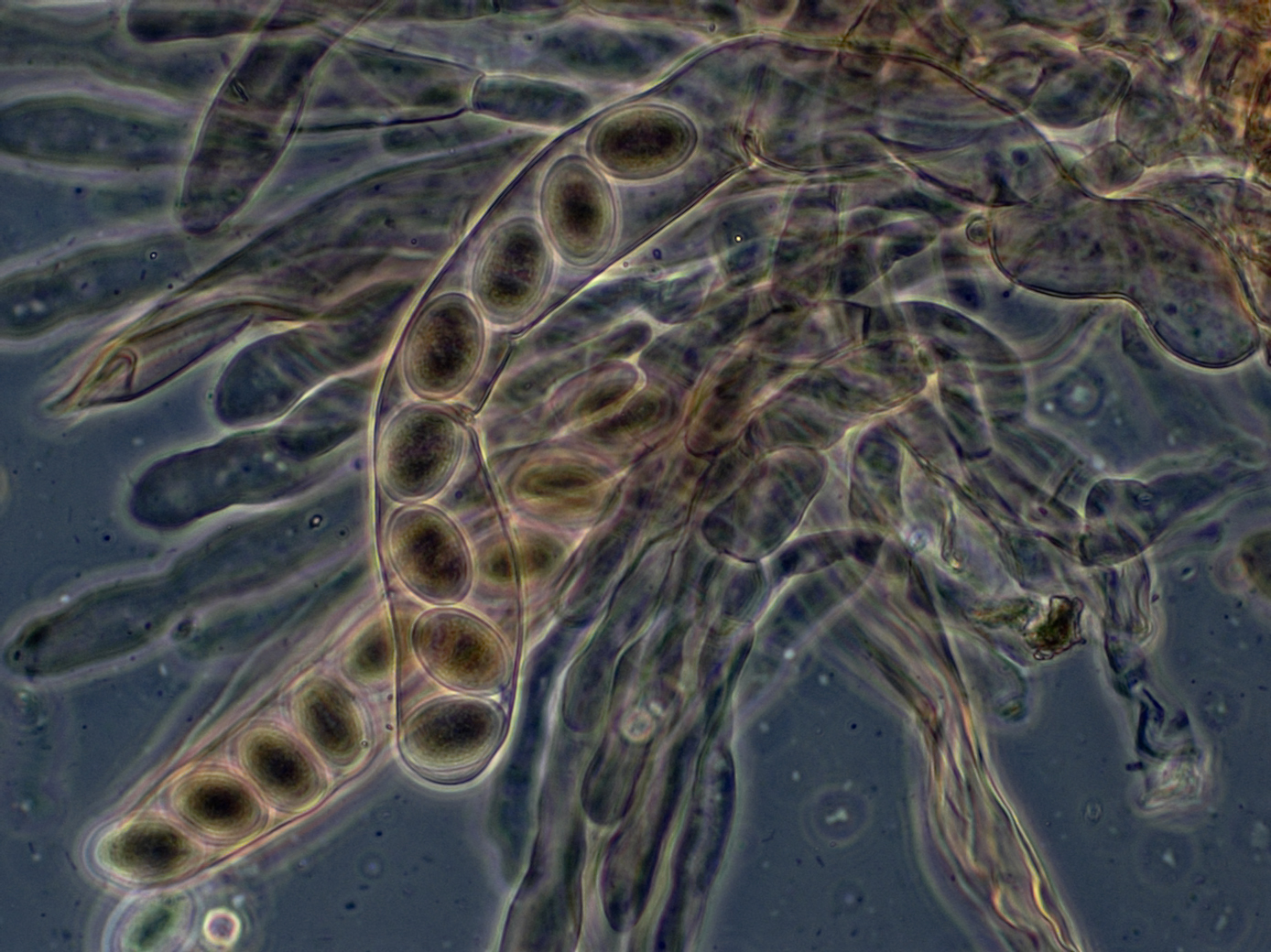|
Roccellinastrum Neglectum
''Roccellinastrum'' is a genus of lichen-forming fungi in the family Pilocarpaceae. It has seven species. Taxonomy The genus was circumscribed in 1968 by German lichenologist Gerhard Follman, with '' Roccellinastrum spongoideum'' assigned as the type species. This byssoid lichen (appearing wispy, like teased wool) was found growing on cactus spines in the fog oases of western Chile. Follman classified the genus in the family Chrysothricaceae, as he emphasized the taxonomic importance of the byssoid thallus, and the similarity of the apothecium and ascus structure to those in that family. In 1983, Aino Henssen and colleagues emended the genus and placed it in the family Lecideaceae. ''Roccellinastrum'' is now classified in the family Pilocarpaceae. Description Species in genus ''Roccellinastrum'' are characterized by apothecia of diverse shape that lack a proper margin, and a developmental morphology corresponding to that of the order Lecanorales. They have small, amyloi ... [...More Info...] [...Related Items...] OR: [Wikipedia] [Google] [Baidu] |
Chrysothricaceae
Chrysotrichaceae is a family of lichenized fungi in the order Arthoniales. Member of this family have a widespread distribution, but are especially prevalent in tropical areas. "Chrysothrichaceae" and "Chrysothricaceae" are alternative spellings that have been used in some older publications; the latter was used by Alexander Zahlbruckner in the protologue publication. Both of these spellings are considered incorrect, and the current spelling has been formalised following a proposal for conservation of Chrysotrichaceae against Pulverariaceae (an earlier synonym). Genera * '' Byssocaulon'' – 1 sp. * ''Chrysothrix'' – ca. 18 spp. * ''Galbinothrix'' – 1 sp. * ''Melarthonis ''Melarthonis'' is fungal genus in the family Chrysotrichaceae. It is a monotypic genus, containing the single species ''Melarthonis piceae'', a corticolous lichen. Both the genus and species were described as new to science in 2014 by Andreas ...'' – 1 sp. References Arthoniomycetes Lichen ... [...More Info...] [...Related Items...] OR: [Wikipedia] [Google] [Baidu] |
Hypha
A hypha (; ) is a long, branching, filamentous structure of a fungus, oomycete, or actinobacterium. In most fungi, hyphae are the main mode of vegetative growth, and are collectively called a mycelium. Structure A hypha consists of one or more cells surrounded by a tubular cell wall. In most fungi, hyphae are divided into cells by internal cross-walls called "septa" (singular septum). Septa are usually perforated by pores large enough for ribosomes, mitochondria, and sometimes nuclei to flow between cells. The major structural polymer in fungal cell walls is typically chitin, in contrast to plants and oomycetes that have cellulosic cell walls. Some fungi have aseptate hyphae, meaning their hyphae are not partitioned by septa. Hyphae have an average diameter of 4–6 µm. Growth Hyphae grow at their tips. During tip growth, cell walls are extended by the external assembly and polymerization of cell wall components, and the internal production of new cell membran ... [...More Info...] [...Related Items...] OR: [Wikipedia] [Google] [Baidu] |
Paraphyses
Paraphyses are erect sterile filament-like support structures occurring among the reproductive apparatuses of fungi, ferns, bryophytes and some thallophytes. The singular form of the word is paraphysis. In certain fungi, they are part of the fertile spore-bearing layer. More specifically, paraphyses are sterile filamentous hyphal end cells composing part of the hymenium of Ascomycota and Basidiomycota interspersed among either the asci ASCI or Asci may refer to: * Advertising Standards Council of India * Asci, the plural of ascus, in fungal anatomy * Accelerated Strategic Computing Initiative * American Society for Clinical Investigation * Argus Sour Crude Index * Association of ... or basidia respectively, and not sufficiently differentiated to be called cystidia, which are specialized, swollen, often protruding cells. The tips of paraphyses may contain the pigments which colour the hymenium. In ferns and mosses, they are filament-like structures that are found on sporang ... [...More Info...] [...Related Items...] OR: [Wikipedia] [Google] [Baidu] |
Amyloid (mycology)
In mycology a tissue or feature is said to be amyloid if it has a positive amyloid reaction when subjected to a crude chemical test using iodine as an ingredient of either Melzer's reagent or Lugol's solution, producing a blue to blue-black staining. The term "amyloid" is derived from the Latin ''amyloideus'' ("starch-like"). It refers to the fact that starch gives a similar reaction, also called an amyloid reaction. The test can be on microscopic features, such as spore walls or hyphal walls, or the apical apparatus or entire ascus wall of an ascus, or be a macroscopic reaction on tissue where a drop of the reagent is applied. Negative reactions, called inamyloid or nonamyloid, are for structures that remain pale yellow-brown or clear. A reaction producing a deep reddish to reddish-brown staining is either termed a dextrinoid reaction (pseudoamyloid is a synonym) or a hemiamyloid reaction. Melzer's reagent reactions Hemiamyloidity Hemiamyloidity in mycology refers to a specia ... [...More Info...] [...Related Items...] OR: [Wikipedia] [Google] [Baidu] |
Lecanorales
The Lecanorales are an order of mostly lichen-forming fungi belonging to the class Lecanoromycetes in the division Ascomycota. The order contains 26 families, 269 genera, and 5695 species. Families * Aphanopsidaceae * Biatorellaceae * Brigantiaeaceae * Bruceomycetaceae * Carbonicolaceae * Catillariaceae * Cladoniaceae * Crocyniaceae * Dactylosporaceae * Gypsoplacaceae * Haematommataceae * Lecanoraceae * Malmideaceae * Pachyascaceae * Parmeliaceae * Pilocarpaceae * Psilolechiaceae * Psoraceae * Ramalinaceae * Ramboldiaceae * Scoliciosporaceae * Sphaerophoraceae * Stereocaulaceae * Tephromelataceae * Vezdaeaceae Genera of uncertain placement There are several genera in the Lecanorales that have not been placed with certainty into any family. These are: *''Coronoplectrum'' – 1 sp. *''Ivanpisutia'' – 1 sp. *'' Joergensenia'' – 1 sp. *'' Myochroidea'' – 4 spp. *''Neopsoromopsis ''Neopsoromopsis'' is a genus of lichen-forming fungi of uncertain famili ... [...More Info...] [...Related Items...] OR: [Wikipedia] [Google] [Baidu] |
Ontology
In metaphysics, ontology is the philosophical study of being, as well as related concepts such as existence, becoming, and reality. Ontology addresses questions like how entities are grouped into categories and which of these entities exist on the most fundamental level. Ontologists often try to determine what the categories or highest kinds are and how they form a system of categories that encompasses classification of all entities. Commonly proposed categories include substances, properties, relations, states of affairs and events. These categories are characterized by fundamental ontological concepts, including particularity and universality, abstractness and concreteness, or possibility and necessity. Of special interest is the concept of ontological dependence, which determines whether the entities of a category exist on the most fundamental level. Disagreements within ontology are often about whether entities belonging to a certain category exist and, if so, ho ... [...More Info...] [...Related Items...] OR: [Wikipedia] [Google] [Baidu] |
Apothecia
An ascocarp, or ascoma (), is the fruiting body ( sporocarp) of an ascomycete phylum fungus. It consists of very tightly interwoven hyphae and millions of embedded asci, each of which typically contains four to eight ascospores. Ascocarps are most commonly bowl-shaped (apothecia) but may take on a spherical or flask-like form that has a pore opening to release spores (perithecia) or no opening (cleistothecia). Classification The ascocarp is classified according to its placement (in ways not fundamental to the basic taxonomy). It is called ''epigeous'' if it grows above ground, as with the morels, while underground ascocarps, such as truffles, are termed ''hypogeous''. The structure enclosing the hymenium is divided into the types described below (apothecium, cleistothecium, etc.) and this character ''is'' important for the taxonomic classification of the fungus. Apothecia can be relatively large and fleshy, whereas the others are microscopic—about the size of flecks ... [...More Info...] [...Related Items...] OR: [Wikipedia] [Google] [Baidu] |
Lecideaceae
The Lecideaceae are a family of lichens in the order Lecideales (Ascomycota, class Lecanoromycetes). Genera According to a recent (2022) estimate, the Lecideaceae comprise 29 genera and about 260 species. The following list indicates the genus name, the taxonomic authority, year of publication, and the number of species: *'' Amygdalaria'' – 11 spp. *''Bahianora'' – 1 sp. *''Bellemerea'' – 10 spp. *'' Bryobilimbia'' – 6 spp. *''Catarrhospora'' – 2 spp. *'' Cecidonia'' – 2 spp. *''Clauzadea'' – 7 spp. *''Cryptodictyon'' – 2 spp. *'' Eremastrella'' – 2 spp. *''Farnoldia'' – 6 spp. *''Immersaria'' – 8 spp. *''Koerberiella'' – 2 spp. *''Labyrintha'' – 1 sp. *'' Lecidea'' – ca. 100 spp. *''Lecidoma'' – 1 sp. *''Lopacidia'' – 1 sp. *'' Melanolecia'' – 7 spp. *''Pachyphysis'' – 1 sp. *''Paraporpidia'' – 3 spp. *''Poeltiaria'' – 8 spp. *''Poeltidea'' – 3 spp. *''Porpidia ''Porpidia'' is a genus of crustose lichens in the ... [...More Info...] [...Related Items...] OR: [Wikipedia] [Google] [Baidu] |
Emendation (zoology)
In zoological nomenclature, emendations are alterations made to the spelling of taxon names. In bacteriological nomenclature, emendations are made to the circumscription of a taxon. In zoology The change must be consciously made along with justification for altering the spelling originally used by the taxon author while describing the species. Any other spelling changes are considered to be unjustified. Valid emendations include changes made to correct: * typographical errors in the original work describing the species; * errors in transliteration from non-Latin scripts; * names that included diacritics or hyphens; * endings of species to match the gender of the generic name, particularly when the combination has been changed. The binomial authority In taxonomy, binomial nomenclature ("two-term naming system"), also called nomenclature ("two-name naming system") or binary nomenclature, is a formal system of naming species of living things by giving each a name composed of ... [...More Info...] [...Related Items...] OR: [Wikipedia] [Google] [Baidu] |
Aino Henssen
Aino Marjatta Henssen (12 April 1925, Elberfeld – 29 August 2011, Marburg), was a German lichenologist and systematist. Her father, Gottfried Henssen, was a folklorist and her mother was Finnish. Education and career Henssen began her studies in Biology in Freiburg, Germany, before continuing in Marburg, Germany. She obtained her doctorate in 1953, which focused on the physiology of '' Spirodela polyrhiza''. In 1963, she became the curator of the ''Botanisches Institut'' at ''Philipps-Universität'' in Marburg, Germany. Following her habilitation in 1965, she was appointed in 1970 to the position of Associate Professor for thallophyte studies. She retired in 1990. "Short biographies of 104 lichenologists who have played a key role in the development of German lichenology are provided." ("Aino Henssen" on pp. 41–43) Contributions Henssen made many advancements to the taxonomic knowledge of cyanolichens and wrote a textbook on the subject. This book reorganized the taxonomic ... [...More Info...] [...Related Items...] OR: [Wikipedia] [Google] [Baidu] |
Ascus
An ascus (; ) is the sexual spore-bearing cell produced in ascomycete fungi. Each ascus usually contains eight ascospores (or octad), produced by meiosis followed, in most species, by a mitotic cell division. However, asci in some genera or species can occur in numbers of one (e.g. '' Monosporascus cannonballus''), two, four, or multiples of four. In a few cases, the ascospores can bud off conidia that may fill the asci (e.g. '' Tympanis'') with hundreds of conidia, or the ascospores may fragment, e.g. some '' Cordyceps'', also filling the asci with smaller cells. Ascospores are nonmotile, usually single celled, but not infrequently may be coenocytic (lacking a septum), and in some cases coenocytic in multiple planes. Mitotic divisions within the developing spores populate each resulting cell in septate ascospores with nuclei. The term ocular chamber, or oculus, refers to the epiplasm (the portion of cytoplasm not used in ascospore formation) that is surrounded by the "bou ... [...More Info...] [...Related Items...] OR: [Wikipedia] [Google] [Baidu] |




